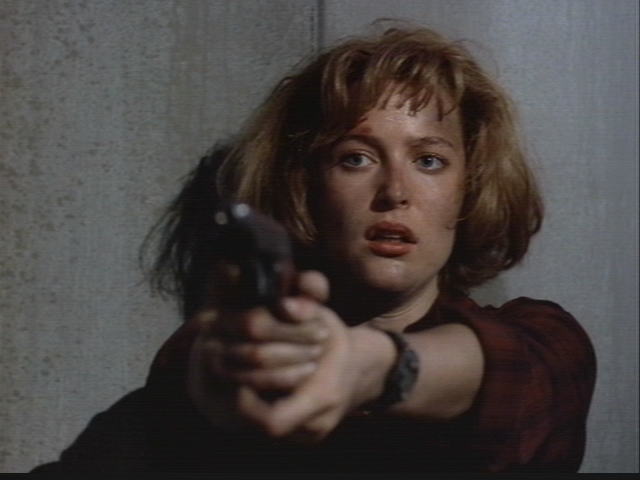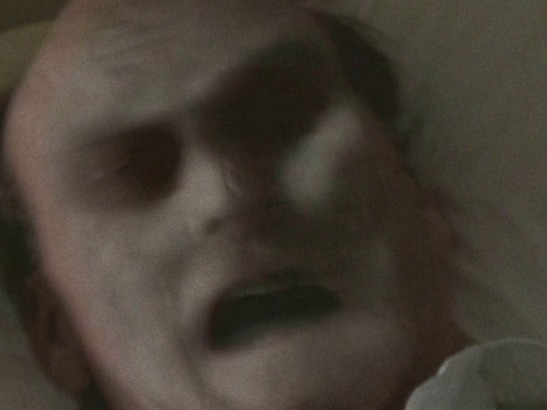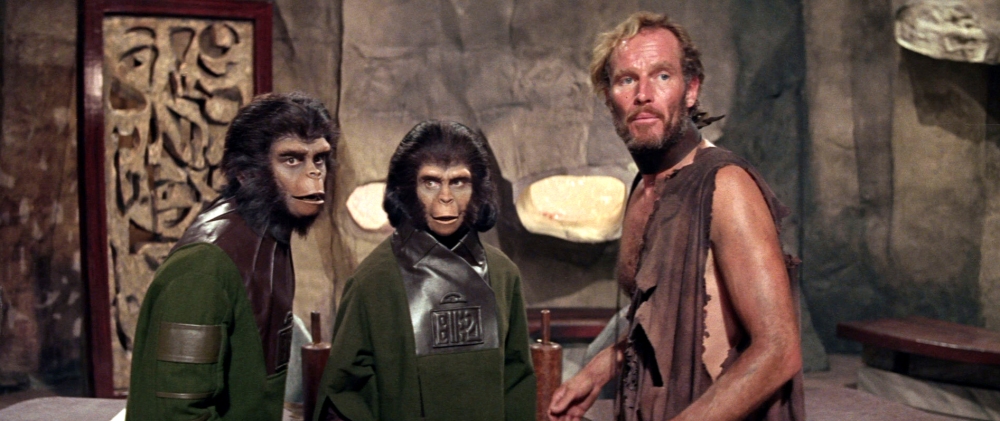
Uncovering The X-Files Season 1 Ep. 7-9
S1, E7 – “Ghost in the Machine”, dir. Jerrold Freedman, written by Alex Gansa & Howard Gordon, originally aired October 29, 1993
The CEO of software company ‘Eurisko’ is murdered by a strangely elaborate booby-trap.
The crime itself is not immediately strange enough to be X-filed; Mulder and Scully only get pulled into the investigation when Mulder’s old partner Jerry Lamana (Wayne Duvall) calls him in for a favour. We get an important new perspective on Mulder as a competent agent, as seen through Jerry’s jealousy. When Jerry is killed during the investigation, it’s interesting to see how Mulder, a man who usually acts on instinct, is able to restrain his emotions enough to see behind the ‘obvious evidence’.
Said evidence points towards Brad Wilczek (Rob LaBelle)—a disheveled computer whiz not unlike Steve Wozniak—as he was fired just before the murder of his boss. We, the audience, very quickly realize that it was Brad’s creation, the Control Operating System (COS) that is the true perp, but such a revelation evades everyone for most of the episode. It’s a sci-fi twist that borrows from “2001: A Space Odyssey”’s HAL-9000; an all-powerful artificial intelligence acts proactively for the sake of self-preservation. Besides a few dated hacking scenes, the episode thankfully steers clear of computer jargon. It’s also interesting to note that Deep Throat returns, though not to contribute to the mythology arc strangely enough.
By the time Mulder has realized COS is the killer, Brad has already turned himself in for the sake of protecting his creation… not from being destroyed, but from being weaponized by the government. There’s a funhouse-esque bit of Mulder and Scully making their way through the Eurisko building, but the kicker that really made the episode great for me was COS’ security guard being a double agent for the government. There was so much conflict and tension at every turn; they were able to turn a decades-old twist into something exciting.

S1 E8 – “Ice”, dir. David Nutter, written by Glen Morgan & James Wong
originally aired November 5, 1993
A video transmission from a remote research base in Alaska shows that all the scientists have gone insane and killed each other.
By far the most dark and tense episode in the series yet, but it has to be said that it lifts so, so heavily from John Carpenter’s “The Thing” (1982), which itself is just one of many adaptions of John W. Campbell, Jr.’s “Who Goes There” (1938). Everything from the locale and atmosphere to the infected dog is directly taken. The only prominent difference between it and “The Thing” is that this bottle-episode can’t afford grotesque puppeteering, so those infected by the alien parasite simply become violently aggressive. The parasite itself is a pretty disgusting worm that runs along the nape of its host’s neck, flexing that TV-14 rating that the show so rarely reminds us it has. As just a monster-of-the-week episode, it’s interesting that it contributes to the alien mythology.
Mulder and Scully aren’t at it alone—we need a tight cast of unique characters to kill off in horror movie fashion. We have the uptight man, the innocent man, the nervous woman, the scruffy pilot; in the brief time we’re introduced to them we get pretty strong characterizations of them, making their eventual descent into paranoia that much more rewarding. The climax is deservingly frantic, but for me the tensest scene was Mulder and Scully standing off against each other. It tells a lot about their ability (and inability) to make difficult choices in an episode that otherwise doesn’t focus too much on their development.
It may be shamelessly ripped from a great horror story, but it’s still a great and thoroughly satisfying episode.

S1 E9 – “Space”, dir. William Graham, written by Chris Carter
originally aired November 12, 1993
A strange force is sabotaging NASA’s attempts to launch a shuttle.
Mulder and Scully are called in by communications commander Michelle Generoo (Susanna Thompson) to investigate NASA’s Mission Control. It’s already a strange case for the X-Files specialists to take, but I’ll give it the benefit of the doubt. Mulder meets his childhood hero, former astronaut Colonel Marcus Belt (Ed Lauter), who acts very strangely and harshly, disillusioning Mulder. In a series of poorly rendered and non-scary nightmare sequences, we learn that Belt is haunted by some kind of Alien spirit he encountered years ago in his space-faring days. The CGI-heavy ghost bits are pretty terrible, as is the cheap Mission Control set. Mulder and Scully have little-to-no affect on the plot, instead just standing around while Belt and Generoo act out rocket science mumbo jumbo. Even if the production side of the episode would have come together, it’s still the worst episode yet.
There’s a few poignant scenes, particularly between Mulder and Belt. The one that stood out was Belt turning on the agent and criticizing sensationalist media coverage and general disinterest in the space program; “They only know your name if you blow up”, a biting comment no doubt referring to NASA’s shuttle Challenger tragically exploding in 1986. It’s fascinating to see Mulder’s faith turn on him for once, as his admiration for Belt blinds him to the Colonel’s strange actions.
Overall it’s a boring, inconsequential episode that does little to engage the series’ main characters, thus losing the audience’s attention.
You can find my thoughts on Episodes 4-6 here











